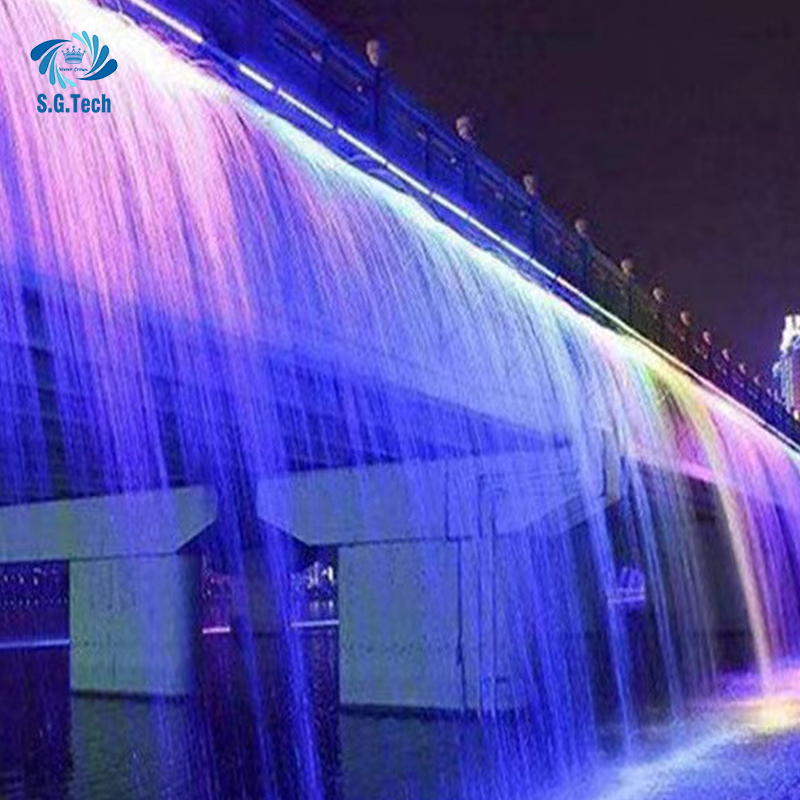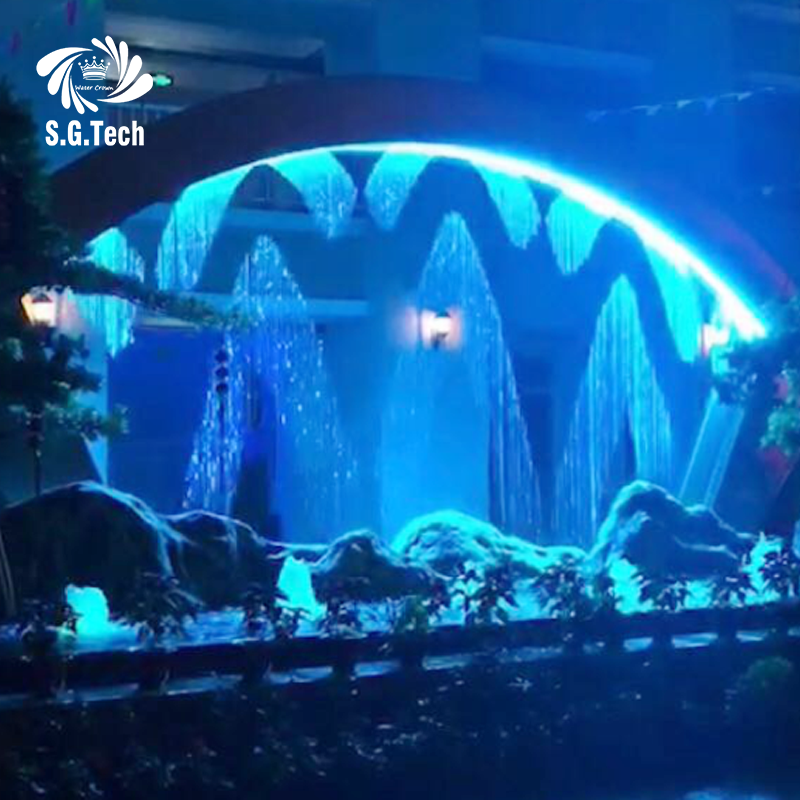
Şelale için bir perde, su yönetimi fonksiyonlarını görsel gösteri estetiğiyle birleştiren benzersiz bir elemandır. Izgara, şelalenin genel görünümünü ve performansını artırmakta olup, izleyiciler için daha çekici ve etkileyici bir deneyim yaratır. Şelale perdesi için kullanılan malzemeler, suya, basınçlarına ve diğer unsurlara sürekli maruz kalmaya dayanabilme kabiliyetlerine göre seçilir. Polipropilen veya nilon gibi yüksek kaliteli sentetik malzemeler, dayanıklılıkları, çürümeye karşı direnci ve esneklikleri nedeniyle sıklıkla kullanılır. Bu malzemeler, suyun akmasına izin veren ancak yapısal bütünlüklerini koruyan örgü veya sayfalara dokunabilir. Bazı durumlarda, özellikle yüksek basınçlı su akışlarına sahip şelalelerde metal ekranlar veya ızgaralar kullanılır. Bu metal bileşenler genellikle çürümesini önlemek ve uzun süreli kullanımını sağlamak için paslanmaz çelikten yapılır. Şelale perdesi tasarımının şelale türü ve hedeflenen efekt ile yakından ilişkisi vardır. Akıcı şelaleler için, perde suyu düzgün ve zarif bir şekilde akıtmak üzere tasarlanabilir ki bu da güzel bir şelale etkisi yaratır. Perdenin şekli ve açısı, suyun nasıl düştüğü ve sıçradığı belirlenerek ayarlanabilir. Jet şelaleleri durumunda, perde su jetlerini şekillendirmek için kullanılabilir; ya daha odaklı ve güçlü bir akım yaratmak için ya da suyu daha dekoratif bir desende dağıtmak için. Işık, şelale perdesi tasarımı için önemli bir parçadır. Şelale perdesi rengi gibi, farklı renkler ve yoğunluklardaki ışıklar su perdesini vurgulamak için kullanılabilir. LED ışıklar genellikle perde yapısının arkasına veya içine takılıp çeşitli görsel etkiler yaratmak için kullanılır. Örneğin, renkli ışıklar su perdesinin farklı renkli maddelerden yapılmış gibi göründüğünü sağlayabilir ve dinamik ışık etkileri suyun hareketiyle senkronize edilerek daha etkileyici bir gösteri yaratabilir. Şelale perdesinin bakımı, doğru işlevini ve görünümünü sağlamak için temeldir. Düzenli temizlik, zaman içinde perde üzerinde birikebilecek toz, alg ve diğer atıkları kaldırmak için gereklidir. Bu, perdenin malzemesine bağlı olarak özel temizlik ajanları ve ekipmanları kullanılarak yapılabilir. Ayrıca, yırtıklar, delikler veya gevşek bileşenler gibi hasar belirtilerine dikkatlice bakılması gerekir. Hasarlı parçalar, daha fazla bozulmayı önlemek ve şelale işleminin güvenliğini sağlamak için hızlıca tamir edilmeli veya değiştirilmelidir. Şelale perdesinin kurulumu da dikkatlice planlanması gerekir. Su akışının uyguladığı güçlere karşı dayanabilmek için şelale yapısına güvenle bağlanması gerekir. Aynı zamanda, bakım ve ayarlama için kolay erişim imkanı olan bir şekilde kurulmalıdır.


